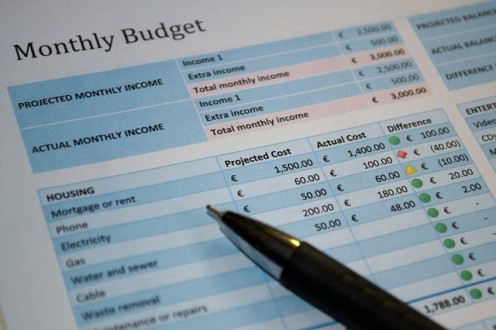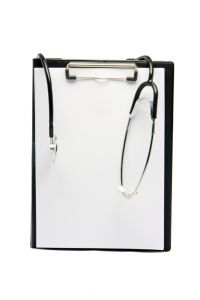Understanding Personal Finance

Necessities vs. Luxuries
Before an individual can begin to grasp, understand, and develop a successful application of knowledge to Personal Finance, that person must understand a basic premise --
The premise to firmly understand encompasses the goal to become financially self-sufficient, followed by the opportunity to develop income streams to support an advanced quality of life, retirement, and in come cases, charity and other non-profit projects.
One of the support beams in the foundation of these goals it to know and understand the difference between necessities and luxuries. Many have not yet considered that distinction, since America has become a land of conspicuous consumption and some of our Cable TV programs encourage this phenomenon.
Millions in America haven't a clue.
Definition
The National Financial Educators Council defines financial literacy as: “possessing the skills and knowledge on financial matters to confidently take effective action that best fulfills their personal, family and global community goals.”
Free Lesson Plans are avaiable at the above link.
Financial Literacy
American high school curricula across the nation have changed in the last 20 to 30 years, adding Work Readiness instruction that includes Financial Literacy.
These classes are meant to help students learn what it takes to seek, find, and hold a job and how to live on a year's earnings without borrowing. In short, Financial Literacy classes help a student to become financiallly responsible and self-sufficicent.
When Welfare Reform began during the Clinton Presidential Administration, Work Readiness and Financial Literacy classes were instituted in many communities, beginning in Kindergarten.
The rationale for K-12 Work readiness was that the schools were to instill the knowledge that Everyone Will Work in America, married or single - everyone. This included the most severely physically and mentally chanllenged people. The concept, when applied, did not work.
In Central Ohio for instance, 400 families were booked for removal from public assitance rolls in 1998, but the members of most suffered physical and mental challenges preventing 1) work, but were not disabled enough to 2) qualify for disability income awards.
However, the school-wide world-of-work and Financial Literacy training helped many students and their families complete a budget and stick to it.
Who Among Those That Need Financial Literacy Can Be Helped?
Gradually, America's youth are becoming finance-savvy, but members of our long-term public assistance rolls are continuing to experience difficulty in understanding real earnings, costs, and savings in a subsidized world.
Another population sector at odds with successful financial navigation is that of the suddenly widowed that never worked outside the home and had no access to the household financial records. This includes women and stay-at-home fathers as well. many of these spouaes or partners haven't a clue about their partner's income or household expenses.
A portion of our Disability Income recipients also have little grasp of financial realities. A lack of activity caused by many physical and mental challenges can increase immobility, increase health problems, and decrease comprehension. Some of these individuals become the victims of consumer fraud quite easily. Others do not know the dollar amounts of their income and/or expenses. Some are supervised by quardians, while others are not.
Another sector of our population that have little understanding of personal finance is a portion (a sector, not all) of homeschooled youth, while other sectors of the US population could also benefit from Financial Literacy.
Impact of Financial Literacy
The Wrong Way to Learn
I had no financial literacy classes in school, but I learned about a passbook savings account on my own. Having no idea what life costs in the real world when I graduated from high school and worked my first full-time job, I literally spent nothing, except for rock bottom basics.
I found a rooming house 1.6 miles away from the job and walked to work. Two meals daily were included in the rent and that was plenty. Health insurance was provided by work, so I needed to spend only a small amount on toiletries and laundry. In this way, I saved enough in a little over two years to be able to afford a college degree. Along the way, I learned about checking accounts; also that I disliked credit cards and the errors of their billing. Financial literacy came piecemeal at best.
A Worse Way to Learn
A colleague of mine had a rougher financial time. He went straight to college and his father provided him with a credit card.
My friend never saw a credit card statement and did not add and keep his receipts. He had no idea how much he was spending. The week after graduation, he received the current statement with a note that his father would no longer be paying the bill. He started his first job buried far in the hole of severe financial debt.
These are stories of two extremes - impossible non-spending, and unregulated spending, Both could have been avoided with an effective financial literacy class in high school or college - but none were offered by school or parents.
Subsidized Living Provides an Unreal Picture
I taught Work Readiness and Career Advancement courses to adults and teens, sitting in on Financial Literacy classes offered by banking officers that volunteered their time to the classroom. These classes were effective and helped many students. The same classes were given to public assistance recipients regularly, attendance often required as a prerequisite for receiving the next month's check. This requirement helped many people as well.
Public assistance recipients can live in an unreal world, where subsidized rents are very low and incomparable to actual rents in the city. When using Food Stamps, most do not combine them with coupons or purchase specials or the healthiest foods. A number tend to buy the highest-priced goods until their Food Stamps ran out. Then they use food pantries. Using Medicaid at their physicians' offices, some never see a bill for actual costs, or they do not read them. Some long-term DIsability Income clients have had the same experiences.



I see some disability clients spend monthly Food Stamp allotments, use food pantries in several parts of town, accept bags of groceries from church members, and then go to restaurants for at least 4 evening meals per week. Many individuals receive Medicaid or free medications from programs in the community or through pharmaceutical companies and are unaware of actual costs. All this seems to be not only poor stewardship and financial management, but also results in working people becoming quite angry with those that do not or are unable to work. Much animosity is boiling in America over these issues.
Some disability and public assistance clients also have huge Cable TV/Internet/telephone bills and, therefore, cannot pay their rent/mortgage, water bill, or electricity on time - or at all. The payment method some use is to divide all monthly bills into two groups and pay one group each alternating month. Using this method, bills remain one month behind and interest expense accumulates for late payments. Often, the Cable is revoked, the electricity disconnected, and the house goes into foreclosure (a renter is evicted).
Individuals and families without a frame of reference for financial literacy must be detected and aided early on in order to prevent these sorts of tragedies.
Financial Literacy for All
The Suddenly Widowed
I was surprised with one client who, at age 56, was widowed and had no knowledge at all of the household finances. She had never written a check and had no understanding of savings accounts. Her reading level was grade 6 and she had worked only a few years in diners after dropping out of the 6th or 7th grade. Her husband, 20 years her senior, had handled all of the family finances and had arranged for her health insurance (part of his retirement package) to end when he died. She was in dire straits
Imposed financial blindness of one spouse or partner on another is not a good or effective activity, even if it allows the controlling partner to prevent potential losses of a spendthrift or ill or mentally challenged person. These days, it is considered financial abuse. The woman mentioned above became nearly destitute, but was made the object of two legal guardianships. Unfortunately, the first guardian mishandled funds. The second was a firm of attorneys that righted the situation.
Victims of domestic abuse and/or violence, once they leave the situation, can benefit from the Financial Literacy classes offered by domestic violence shelters in many cities. Churches also often offer these classes as another location choice.
Homeschoolers
Homeschool is one way for families to drop out of mainstream society and its growing problems with in-person bullying and cyberbullying as well as to stand against curricula they find offensive. However, does homeschooling prepare a child for the world of work? A continuing debate drones on the topic of whether a homeschooled child can grow up to hold a job.
A budget and overall financial literacy are part of an adequate education and can be taught in the home. Is this occurring? If you are a homeschooling parent and would like to incorporate Financial Literacy Classes in your curriculum, see the link at the top of this Hub for free lesson plans.
Some homeschoolers undoubtedly grow up to find and maintain well-paying work. Others, after completing studies, cannot hold down a salaried or hourly position with set hours and responsibilities, because they have lived by an irregular schedule. Some of these young adults cannot work at all, but others find success in the artistic fields or in other types of self-employment. Regardless of job or career type, all homeschoolers can benefit from financial literacy training.

A Simple Monthly Budget for a First Job
Expense Categories
| Expense Dollars
| Income Dollars
|
|---|---|---|
MONTHLY INCOME TOTAL
| $ ---
| $ ---
|
---
| ||
MONTHLY NECESSITIES:
| ---
| |
RENT
| ---
| |
UTILITIES: Gas, Water, Electric, Trash
| ---
| |
..Telephone or Cell Phone (not both)
| ---
| |
..Cable TV?
| ---
| |
..Internet Access?
| ---
| |
--Better Deal: Bundled Phone/Cable/Internet
| ---
| |
FOOD: 1) Groceries and 2) Lunches packed for work
| ---
| |
Transportation: Busfare or Auto payment, maintainence, and Insurance
| ---
| |
Health & Life Insurance
| ---
| |
Physician and Medications
| ||
Clothing and Laundry
| ---
| |
Savings
| ---
| |
SUBTOTAL >>>
| $
| Subtract from Income = $
|
OPTIONAL:
| ---
| |
Entertainment
| ---
| |
Vacation Fund
| ---
| |
Gifts
| ---
| |
Other (define)
| ---
| |
NEW SUBTOTALl>>>
| $
| ---
|
TOTAL EXPENSES (add subtotals)
| $
| Subtract from Remaining Income = $
|
(c) Patty Inglish, MS January 1, 2011. All rights reserved.
Note: If you arrive at the first SUBTOTAL, subtract it from the INCOME and have $0 or a negative number, you have too many expenses already. You cannot allot any dollars for the OPTIONAL expenses and will need to reduce some of the NECESSITIES expenses -- For example, find a cheaper Phone/Cable/Internet bundle, find ways of saving on utilities, etc.












